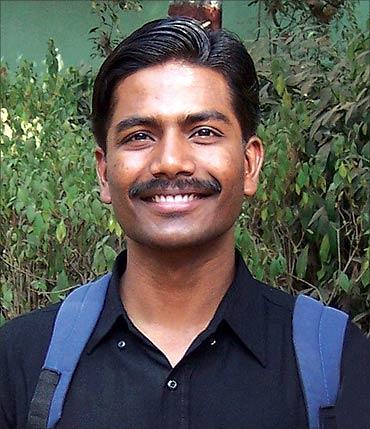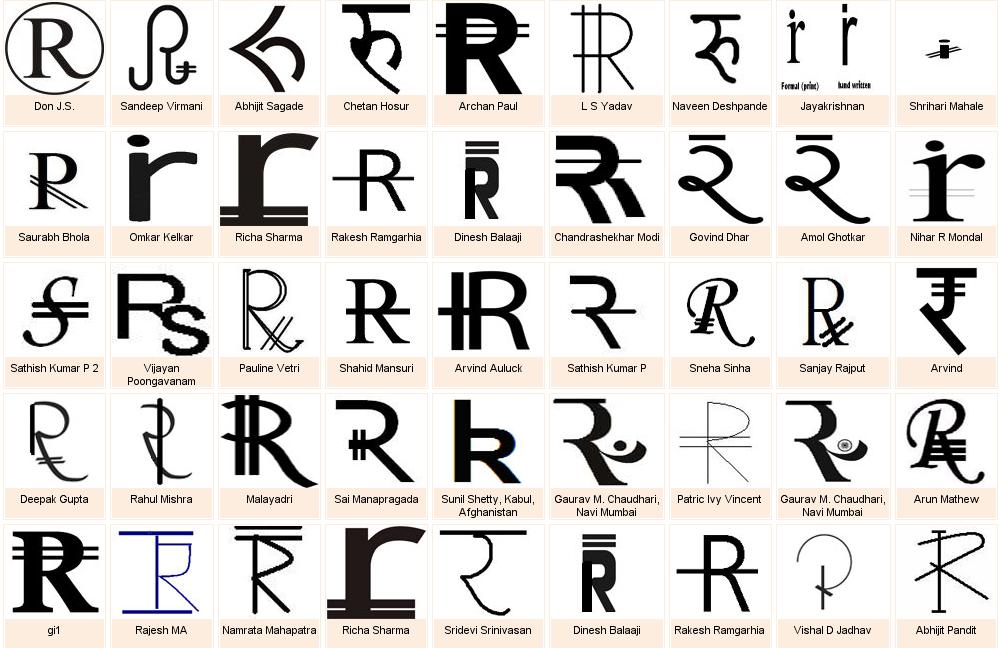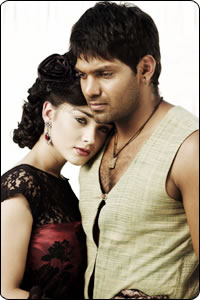
Hockenheim: Fernando Alonso led home a Ferrari 1-2 in Sunday's German Formula One Grand Prix at Hockenheim to register his first win since the opening race of the season in Bahrain.
There could be disciplinary consequences, however, as Alonso's 23rd victory of his career was assured when the Spaniard passed teammate Felipe Massa on lap 49, just one round after the Brazilian was clearly told on his team radio that Alonso was faster than him.
Red Bull's Sebastian Vettel started the race from pole position ahead of Alonso and Massa but had to be satisfied with third place after falling behind the two Ferraris in the opening corner.
Championship leader Lewis Hamilton, by contrast, jumped two places in the opening lap to eventually finish fourth ahead of defending world champion and McLaren teammate Jenson Button.
Hamilton now leads the drivers' standings with 157 points from 11 of 19 races, followed by Button on 143. Vettel sits joint third with Webber on 136 while Alonso now has 123 points in fifth place.
Pivotal slow start
While Vettel's slow start was pivotal as to how the race eventually panned out, the major talking point was whether Alonso's passing of Massa to ensure victory was done under team orders.
“At the exit at turn six I saw Felipe was a little bit slow and tried to overtake,” said Alonso.
“At that point I overtook the other car and then it was 15 or 20 laps to the end.”
Massa, meanwhile, made clear that he felt he deserved to win the race but stopped short of stating that he had followed team orders and let Alonso pass him.
Red Bull team principal Christian Horner refused to rule out lodging an official protest about the incident, though, saying he would first see how motorsport's ruling body, the FIA, and race stewards at Hockenheim dealt with the issue.
The results: 1. Fernando Alonso (Ferrari) 1:27:38.864s, 2. Felipe Massa (Ferrari) + 4.196s, 3. Sebastian Vettel (Red Bull) + 5.121, 4. Lewis Hamilton (McLaren) + 26.896, 5. Jenson Button (McLaren) + 29.482, 6. Mark Webber (Red Bull) + 43.606, 7. Robert Kubica (Renault) + 1 lap, 8. Nico Rosberg (Mercedes GP) + 1, 9. Michael Schumacher (Mercedes GP) + 1, 10. Vitaly Petrov (Renault) + 1, 11. Kamui Kobayashi (Sauber) + 1, 12. Rubens Barrichello (Williams F1) + 1, 13. Nico Huelkenberg (Williams F1) + 1, 14. Pedro de la Rosa (Sauber) + 1, 15. Jaime Alguersuari (Toro Rosso) + 1, 16. Vitantonio Liuzzi (Force India) + 2, 17. Adrian Sutil (Force India) + 2, 18. Timo Glock (Virgin Racing) + 3, 19. Bruno Senna (Hispania) + 4. Retirements: Sebastien Buemi (Toro Rosso): mechanical problem second lap; Jarno Trulli (Lotus): mechanical problem fourth lap; Sakon Yamamoto (Hispania): mechanical problem 20th lap; Lucas di Grassi (Virgin Racing): mechanical problem 51st lap; Heikki Kovalainen (Lotus): mechanical problem 57th lap.
2010 German Grand Prix, lap by lap highlights:
Formation lap: Local hero Sebastian Vettel starts from pole position ahead of Ferrari’s Fernando Alonso. Third place on the Hockenheim grid for Ferrari’s Felipe Massa, fourth for Mark Webber, fifth for reigning world champion Jenson Button and sixth for Lewis Hamilton. Position seven for Robert Kubica, eight for Rubens Barrichello, nine for Nico Rosberg in the Mercedes, ten for Nico Hulkenberg and eleven for seven time world champion Michael Schumacher.
Race start: Lights go off..Massa first into Turn 1. Alonso in P2, Vettel P3. Webber P4, Hamilton P5.
Lap 2/67: Sutil, Liuzzi, Buemi and Alguersuari all pit. Buemi retires.
Lap 3/67: Trulli running slowly on the track. Replays show Alguersuari hitting Buemi’s rear end.
Lap 4/67: Trulli being wheeled back into the garage.
Lap 5/67: Massa first followed by Alonso, Vettel, Hamilton, Webber, Button, Kubica and Schumacher. Sutil makes another pit stop.
Lap 6/67: Liuzzi pits. Trulli back on track but running slowly again.
Lap 8/67: Trulli pits again and retires after a gearbox failure.
Lap 9/67: Massa P1, has a +1.5s gap to team mate Alonso.
Lap 10/67: Fastest lap for Alonso: 1:18.965.
Lap 11/67: Fastest lap for Massa: 1:18.915.
Lap 13/67: Vettel pits from P3. He rejoins in P6.
Lap 14/67: Alonso pits from P2. Webber pits from P4. Webber rejoins in ninth. Alonso in fourth.
Lap 15/67: Massa pits from P1. Hamilton pits. Massa rejoins in P3. Schumacher and Barrichello pit.
Lap 16/67: Kobayashi pits from P10. Alonso pressuring Massa for P2.
Lap 18/67: Kubica pits from P8. Button leading the race but he still has to pit. Kubica rejoins in P11, ahead of Schumacher.
Lap 19/67: Button P1, Massa P2, Alonso P3, Vettel P4, Hamilton P5, Rosberg P6, Webber P7, Petrov P8.
Lap 20/67: Vettel P4, is closing rapidly on the two Ferraris.
Lap 21/67: Massa and Alonso battling for P2.
Lap 23/67: Button pits from P1. He rejoins in fifth.
Lap 24/67: Fastest lap for Massa: 1:18.711. Massa P1, Alonso P2, Vettel P3. Petrov pits from P8.
Lap 25/67: Another fastest lap for Massa: 1:18.646. Rosberg has pitted from P7. Rosberg rejoins in P10, ahead of Schumacher.
Lap 26/67: Kovalainen pits from P17.
Lap 27/67: Fastest lap for Massa: 1:18.560. Massa has a +3s gap to the Spaniard.
Lap 28/67: Another fastest lap for Massa: 1:18.399.
Lap 29/67: Alonso sets a 1:18.075. Alguersuari pressuring Sutil for P15.
Lap 31/67: Massa clocks a 1:17.991, fastest lap so far.
Lap 32/67: 1:17.751 for Fernando Alonso.
Lap 35/67: de la Rosa passes Hulkenberg for P7. Hulkenberg makes his first pit stop. Meanwhile the gap between Massa and Alonso is coming down, now 2.3s.
Lap 36/67: Sutil pits for the third time.
Lap 37/67: Fastest lap for Alonso: 1:17.666. Massa P1, Alonso P2, Vettel P3, Hamilton P4, Button P5, Webber P6, de la Rosa P7, Kubica P8, Rosberg P9, Schumacher P10.
Lap 38/67: 1:17.495 for Alonso.
Lap 39/67: de la Rosa, Di Grassi and Glock, have yet to pit.
Lap 41/67: Sutil sets the fastest lap from P17: 1:17.300.
Lap 42/67: Senna pits from P21.
Lap 43/67: Fastest lap for Vettel: 1:17.242.
Lap 45/67: Vettel clocks another fastest lap: 1:17.122.
Lap 46/67: Webber being told over the radio he has an oil consumption problem.
Lap 48/67: Fastest lap for Alonso: 1:17.012. Massa being told over the radio that Alonso is faster than him. “Alonso is faster than you. Can you confirm you understood the message?”, said Massa’s engineer, Rob Smedley.
Lap 49/67: Massa lets Alonso pass. Alonso P1, Massa P2. There is going to be a controversy…Article 39.1 of the Sporting Regulations states that team orders are prohibited.
Lap 52/67: Fastest lap for Vettel: 1:16.669.
Lap 53/67: de la Rosa makes his first pit stop.
Lap 55/67: di Grassi being wheeled into the garage, he retires.
Lap 56/67: Fastest lap for race leader Alonso: 1:16.625.
Lap 57/67: Fastest lap for Vettel: 1:16.536. Alonso P1, Massa P2, Vettel P3, Hamilton P4, Button P5, Webber P6, Kubica P7.
Lap 58/67: Vettel just 1.5s to Massa.
Lap 60/67: de la Rosa pits for a new front wing after a collision with Kovalainen.
Lap 61/67: Vettel now pressuring Massa for P2. Kovalainen pits and retires.
Lap 66/67: Fastest lap for Alonso: 1:15.880.
Last lap: Ferrari’s Fernando Alonso wins the
2010 German Grand Prix at the Hockenheim circuit ahead of team-mate Felipe Massa. Third place for local hero Sebastian Vettel, fourth for Lewis Hamilton, fifth for Jenson Button, sixth for Mark Webber, seventh for Robert Kubica, eighth for Nico Rosberg, ninth for Michael Schumacher and tenth for Vitaly Petrov.
Overall championship standings:
Drivers: 1. Hamilton 157 points,
2. Button 143,
3. Webber 136,
4. Vettel 136,
5. Alonso 123,
6. Rosberg 94,
7. Kubica 89,
8. Massa 85,
9. Schumacher 38,
10. Sutil 35,
11. Barrichello 29,
12. Kobayashi 15,
13. Liuzzi 12,
14. Vitaly Petrov 7,
15. Sibastien Buemi 7,
16. Alguersuari 3,
17. Huelkenberg 2.
Constructors:
1. McLaren 300 points,
2. Red Bull 272,
3. Ferrari 208,
4. Mercedes GP 132,
5. Renault 96,
6. Force India 47,
7. Williams F1 31,
8. Sauber 15,
9. Toro Rosso 10 .
— DPA


















